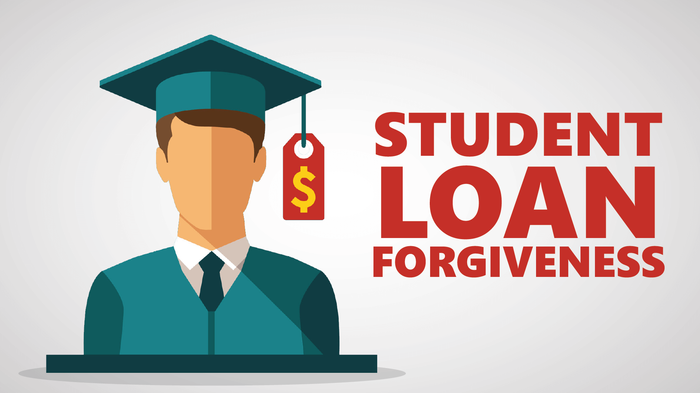
A Complete Guide to Student Loan Forgiveness on StudentAid.gov-Navigating the world of student loans can be overwhelming, especially when it comes to understanding forgiveness options. Fortunately, StudentAid.gov is a valuable resource that provides comprehensive information on student loan forgiveness programs. This guide will break down the essentials, helping you find the right path toward reducing or eliminating your student debt.
What is Student Loan Forgiveness?

Student loan forgiveness is a program that allows borrowers to have some or all of their student loans canceled under specific circumstances. This can be a game-changer for many, making higher education more accessible and manageable. Whether you’re a teacher, a healthcare worker, or serve in the military, there are various programs designed to ease your financial burden.
Why Use StudentAid.gov?
Before diving into specific programs, let’s talk about why StudentAid.gov should be your go-to resource. This official site, managed by the U.S. Department of Education, provides up-to-date information on student loans, grants, scholarships, and forgiveness options. Here, you can find detailed guides, eligibility requirements, and application procedures, ensuring you have all the information at your fingertips.
Types of Student Loan Forgiveness Programs

1. Public Service Loan Forgiveness (PSLF)
One of the most well-known forgiveness programs is the Public Service Loan Forgiveness (PSLF) program. If you work full-time for a qualifying employer—such as a government agency or a non-profit organization—you may qualify for forgiveness after making 120 qualifying payments on your Direct Loans.
Key Features:
- Must be employed full-time in public service.
- Requires 120 qualifying payments under a qualifying repayment plan.
- Only Direct Loans are eligible.
To get started, check the PSLF section on StudentAid.gov to understand the application process and ensure you’re on the right track.
2. Teacher Loan Forgiveness
Teachers can benefit from the Teacher Loan Forgiveness program if they teach full-time in a low-income school or educational service agency. This program offers forgiveness of up to $17,500 on Direct Subsidized and Unsubsidized Loans, depending on the subject you teach and your teaching service.
Key Features:
- Must teach full-time for five consecutive years in a qualifying school.
- Only applies to Direct Loans and certain FFEL loans.
You can find more details about eligibility and application processes on StudentAid.gov, making it easier for educators to navigate their options. (Read More: The Impact of Student Loan Forgiveness on Millennials and Gen Z)
3. Income-Driven Repayment (IDR) Forgiveness
Income-Driven Repayment plans adjust your monthly payment based on your income and family size, making your loans more manageable. After 20 or 25 years of qualifying payments, any remaining balance on your loans may be forgiven.
Key Features:
- Payments are based on income, making it affordable for many.
- Requires a longer commitment (20-25 years).
StudentAid.gov offers a loan simulator to help you determine which IDR plan is best for you and gives you a realistic timeline for potential forgiveness.
4. Borrower Defense to Repayment
If you attended a school that misled you or engaged in illegal activity, you might qualify for Borrower Defense to Repayment. This program can forgive your federal student loans if you can prove that the school’s actions negatively impacted your education.
Key Features:
- Specific to borrowers who attended certain institutions.
- Requires documentation of the school’s misleading actions.
Check StudentAid.gov for details on how to file a claim and what documentation you’ll need to provide. (Read More: Top Strategies for Managing Student Loans in 2024)
How to Apply for Forgiveness

Applying for student loan forgiveness can seem daunting, but StudentAid.gov simplifies the process. Here are the general steps you should follow:
- Determine Eligibility: Review the different forgiveness programs and see which one aligns with your situation.
- Gather Documentation: Collect necessary documents like proof of employment, loan details, and any required forms.
- Submit Your Application: Follow the specific instructions for your chosen program, which you can find on StudentAid.gov.
- Follow Up: Keep track of your application status and ensure all paperwork is processed correctly.
Stay Informed
The rules and programs around student loan forgiveness can change, so it’s essential to stay updated. Regularly check StudentAid.gov for the latest information and resources. You can also subscribe to their newsletters for announcements about changes in policy or new programs. (Read More: Student Loans vs. Scholarships: Which Is the Better Option for 2024?)
Conclusion article A Complete Guide to Student Loan Forgiveness on StudentAid.gov
Student loan forgiveness can significantly alleviate your financial burden, and StudentAid.gov is your trusted companion in this journey. By understanding the various forgiveness options available and taking proactive steps, you can work toward a brighter financial future. Remember, you’re not alone in this process, and with the right resources, you can successfully navigate your way to student loan forgiveness. Happy exploring!





2 thoughts on “A Complete Guide to Student Loan Forgiveness on StudentAid.gov in 2024”